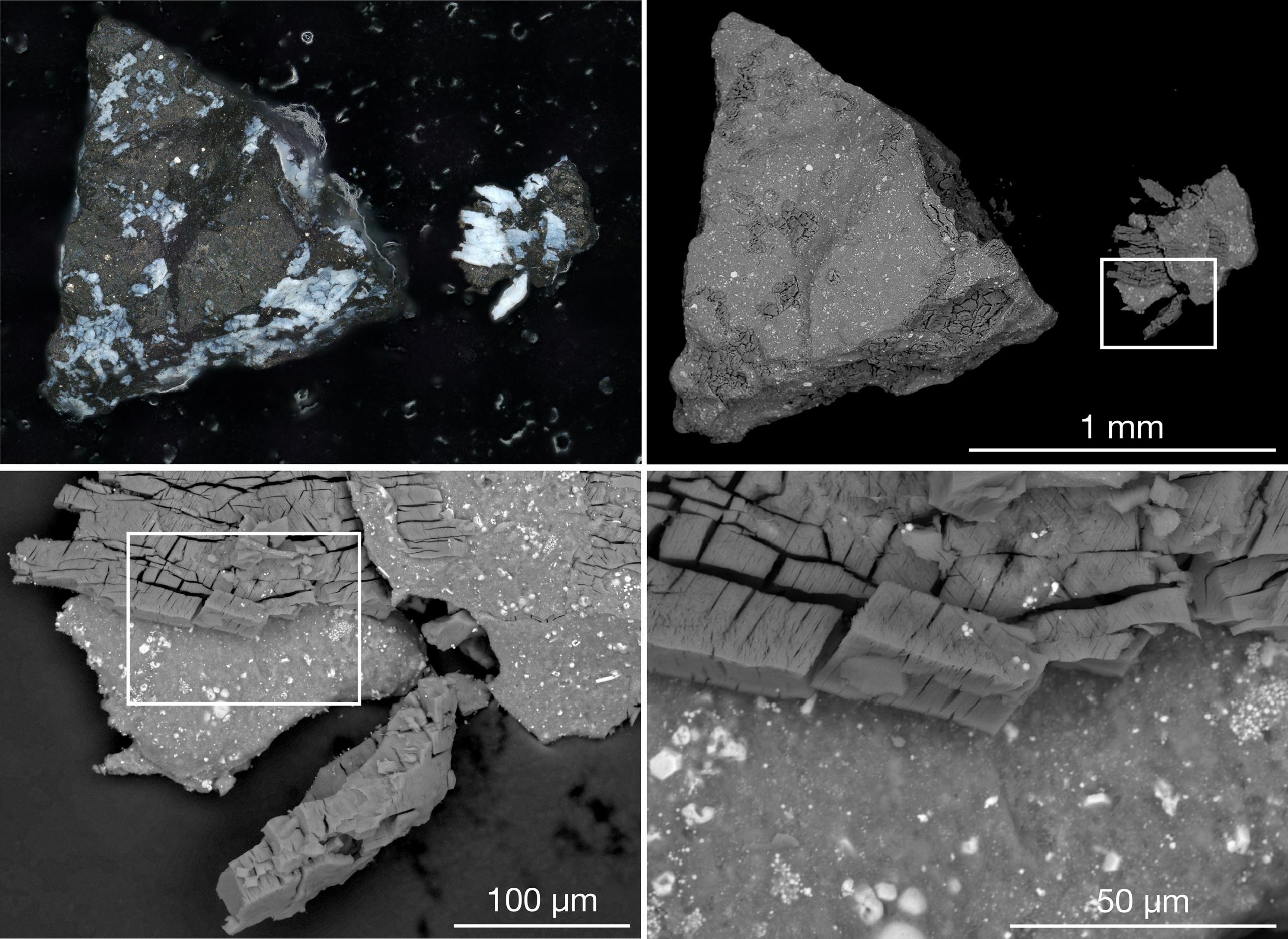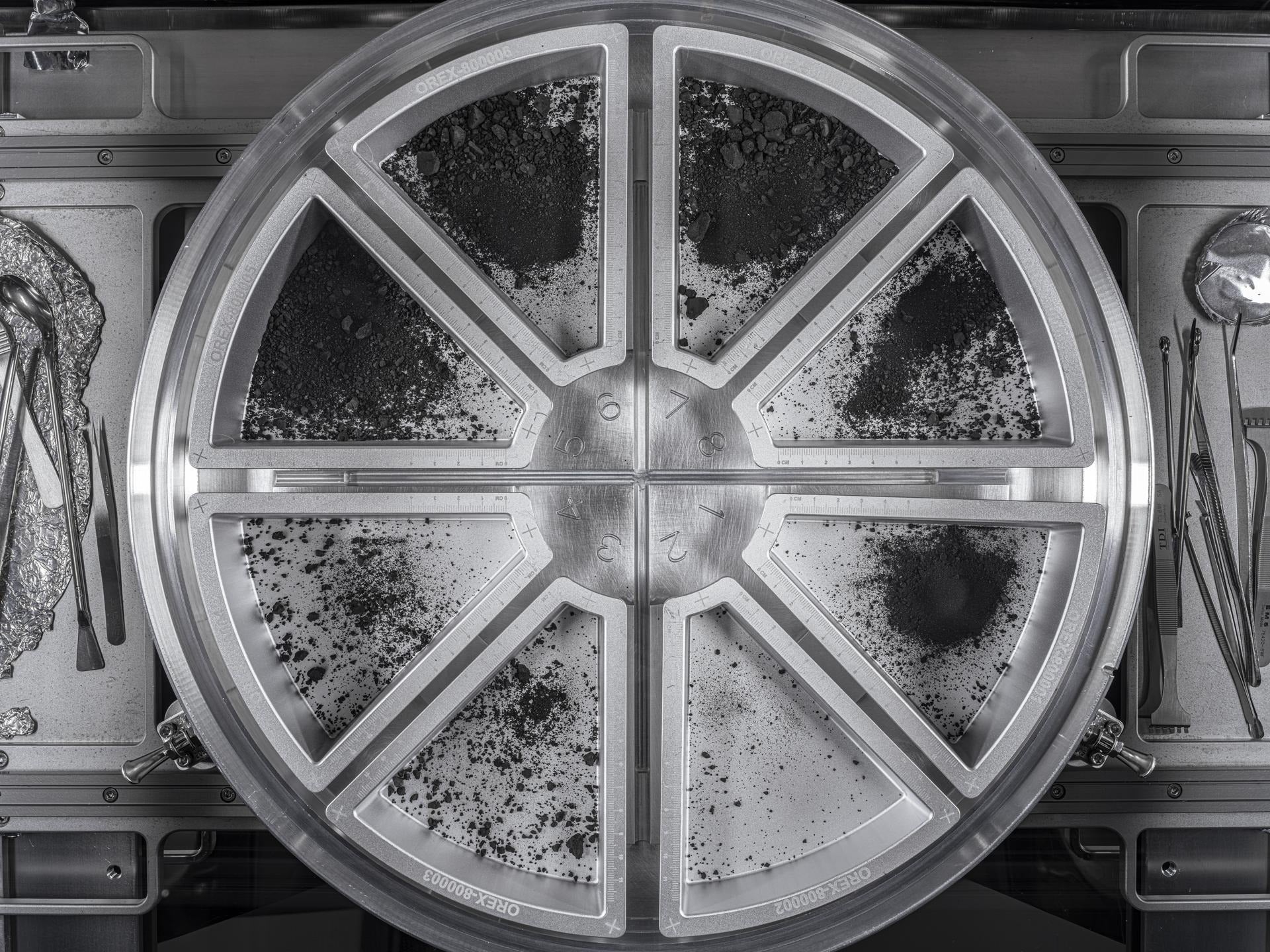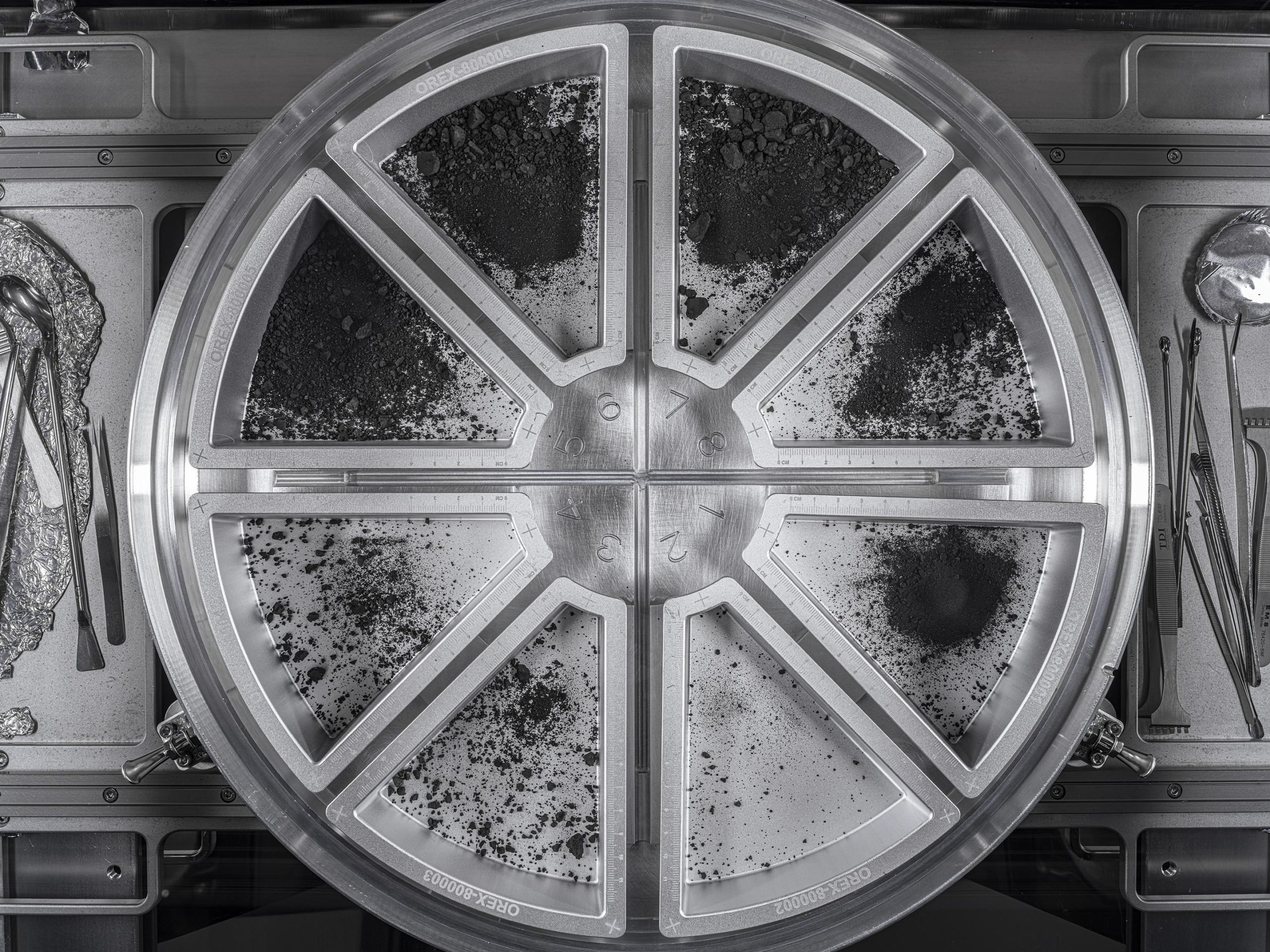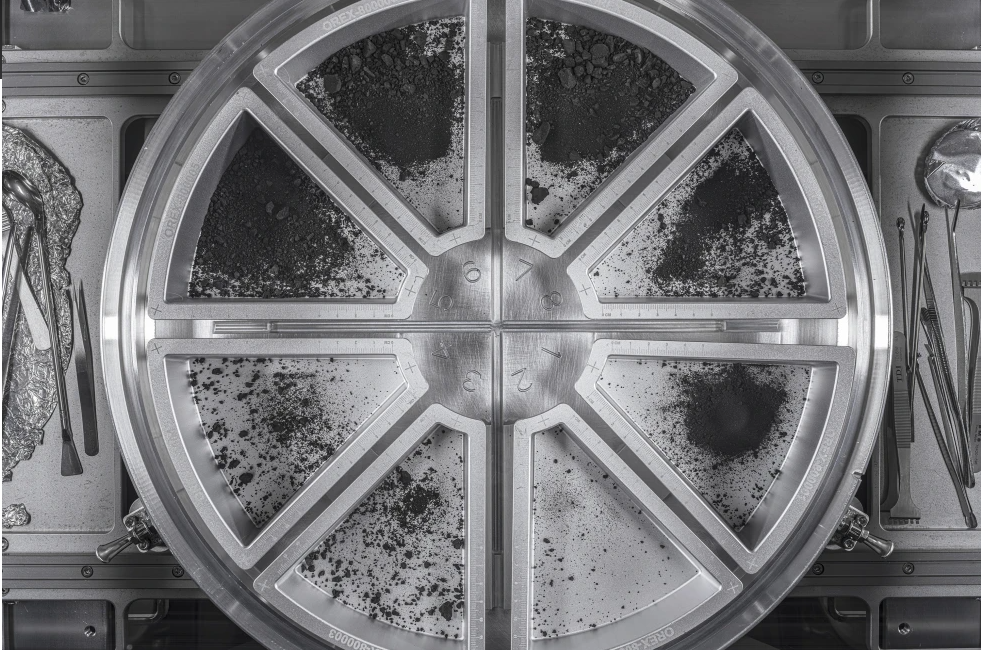







NASA's OSIRIS-REx mission has exceeded expectations by collecting double the amount of asteroid rubble than initially anticipated [fe69c856] [449cb369]. The spacecraft, which gathered the samples from the asteroid Bennu three years ago, returned to Earth last September with 121.6 grams (4.29 ounces) of dust and pebbles [fe69c856] [449cb369]. The success of the mission is a significant achievement for NASA and the field of space exploration [fe69c856] [449cb369].
The additional samples collected from Bennu will provide scientists with more opportunities to study the composition and history of the asteroid, shedding light on the formation and evolution of celestial bodies [fe69c856] [449cb369]. The black, carbon-rich samples are currently stored at a special curation lab at NASA's Johnson Space Center in Houston [fe69c856] [449cb369]. NASA will retain at least 70% of the sample for further research, while the rest will be distributed to researchers around the world [9f5dc1ec].
NASA's first asteroid Bennu analysis reveals minerals never seen on Earth [8fdef0af]. The analysis of the samples returned from Bennu by the OSIRIS-REx spacecraft shows the presence of bright-white particles identified as magnesium phosphate, a mineral not commonly found on Earth [8fdef0af]. The samples also contain glycine, a simple amino acid, as well as high levels of water-bearing minerals such as olivine, magnetite, carbonates, and sulfites [8fdef0af]. The presence of water-altered compounds called phyllosilicates and other hydrated and organic minerals suggests that Bennu has experienced multiple water-related episodes [8fdef0af]. Further analysis of the samples is expected to provide more insights into the asteroid's history and its role in delivering the building blocks of life to Earth [8fdef0af].
Early results from NASA’s OSIRIS-REx mission to Bennu have uncovered exotic versions of chondrules — rocks commonly found in meteorites [9ec68867]. The sample collected from Bennu contains grains that resemble chondrules to varying degrees, suggesting that asteroids are more diverse than meteorites might suggest [9ec68867]. The team is currently investigating whether the remnants could be from another type of rock that formed in the solar system even earlier than chondrules [9ec68867]. The team plans to slice a thin sample of the grains to see if they contain other materials commonly found in chondrules [9ec68867]. If confirmed, this discovery would indicate that the population of asteroids in our solar system is more varied than indicated by meteorites found on Earth [9ec68867]. The findings from Bennu and another asteroid, Ryugu, suggest that there are many asteroids out there that are similar but don’t exactly match the meteorites in our collections [9ec68867].
On September 24, 2023, NASA successfully returned asteroid samples collected by the OSIRIS-REx spacecraft to Earth [94b78b94]. The spacecraft collected regolith from the asteroid Bennu's Hokioi Crater, confirming its carbon-rich composition [94b78b94]. The samples revealed the presence of magnesium sodium phosphate, suggesting potentially aqueous origins for Bennu [94b78b94]. This discovery indicates that Bennu's parent body was a water-filled object, providing insights into solar system formation and prebiotic chemistry [94b78b94]. The findings highlight the importance of sample-return missions for understanding asteroids and potential cosmic threats [94b78b94].
The success of the OSIRIS-REx mission has allowed NASA to exceed its mission goals and deliver a larger sample of asteroid material than expected [9f5dc1ec]. The mission team initially aimed to collect at least 60 grams of material, which was already exceeded before the TAGSAM head was fully opened [9f5dc1ec]. In October 2023, small rocks and dust were collected from inside the TAGSAM head and from inside TAGSAM itself [9f5dc1ec]. Disassembly of the TAGSAM head was paused in late October 2023 due to two stubborn fasteners, but they were successfully removed in January [9f5dc1ec]. The remaining Bennu sample was poured into containers, bringing the total mass of the sample to 121.6 grams (4.29 ounces) [9f5dc1ec].
NASA's OSIRIS-REx mission is now on its way to another space rock, but this mission will only involve a flyby and no sample collection [fe69c856] [449cb369]. A catalog of OSIRIS-REx samples will be released this spring for ordering by the scientific community [9f5dc1ec].
Dr. Harold Connolly Jr. and Dr. William Carrigan discussed the historic OSIRIS-REx space mission during a Centennial Lecture Series event at Rowan University [f10bc8b6]. The event took place on March 18 and was part of a year-long celebration of Rowan's first 100 years [f10bc8b6]. Connolly, the OSIRIS-REx mission sample scientist, shared his history with the project and discussed the surprises encountered during the mission [f10bc8b6]. The spacecraft orbited the asteroid Bennu for two years and collected a sample by digging deep into the loose rubble [f10bc8b6]. The scientists hope to study the sample to better understand the origins of water on Earth, the beginnings of life, and how to prevent asteroids from hitting Earth [f10bc8b6]. The event also included a geology expo and a planetarium show [f10bc8b6].
The OSIRIS-REx mission returned a sample from asteroid Bennu, revealing it contains key solar system materials and possible signs of a watery past [1f3fb14d]. The sample contains carbon, nitrogen, organic compounds, and magnesium sodium phosphate, suggesting that Bennu could have originated from a primitive ocean world [1f3fb14d]. The sample also provides insights into the early solar system's conditions and the potential origins of life [1f3fb14d]. The mission launched on September 8, 2016, and delivered the sample to Earth on September 24, 2023 [1f3fb14d]. The sample is the largest reservoir of unaltered asteroid material on Earth and offers a glimpse into the early days of the solar system [1f3fb14d]. The presence of carbon and nitrogen in the sample provides clues about the chemical processes that could have led to the formation of complex molecules and the potential for life on Earth [1f3fb14d]. The Bennu sample will be distributed to dozens of labs for further analysis [1f3fb14d].